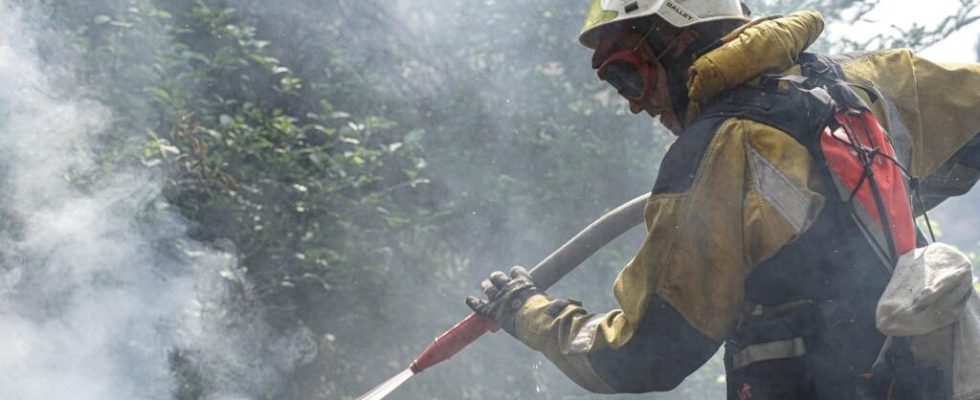In Chicago, the third most populous city in the United States, the skies are gray for the second day in a row. The air of the American Midwest is heavily polluted by smoke from fires in Canada, for the second time since the beginning of the year. Nearly 500 fires are still active in the neighboring country. The hundreds of international firefighters who have come to lend a hand to Canadians are faced with a complex task in the heart of the boreal forest. Eric Florès is the leader of a detachment of 108 French sappers who have come to lend a hand for three weeks. Interview conducted by Edward Maille.
RFI: What are the particularities of the Canadian terrain?
Eric Flores: THE fires are basically the same, but the fight is totally different because the forests here are huge. In France, forests are more limited. We have equipped our forests with traffic lanes, so we can attack the fires with vehicles, which we cannot do here, where we work behind the fire. In France, we work more on the place where we can attack the front of the fire.
What were your working conditions like during those three weeks?
It is difficult to see, to imagine life in these forest camps. In the middle of the lakes you have mosquitoes, enormous, little ones. Teams returned from exhausted days, bitten everywhere. Really, it was work long drawn out. They did a phenomenal hard job. We were thrown into a helicopter with chainsaws. We developed areas team landings. Then we came either with pumps or with big rakesux specialized that allow you to scrape the ground to fetch the places Or it smokes in below. There’s there are a lot of lakes in this region of Quebec, that’s why there are mosquitoes. We had a wake up at five o’clock in the morning. From half past six, we were in the field. It’s super work–demanding physically since there were times when we had our feet in the water, in the swamps and despite that, the peat [une matière organique fossile formée par accumulation sur de longues périodes de temps de matière organique morte, NDLR] above was burning. I salute their work which has been painstaking work to save every meter on the firess. This is what allowed us to win of a number of small battles.
What makes this terrain such a complicated terrain?
You have a lot of humus, lakes, ponds. So, we are on very loose soils and very complicated to extinguish. The fire takes as if it were grass, on the top of this humus. Afterwards, it projects itself and goes on the tops of the trees and that’s how the fire evolves. But, below, the ground remains marshy and very humid. It’s always very complicated because when you want to completely put out the fire, you have to scrape all this humus zone, go to the ground which is sometimes a meter below to be able to put everything out. It is very laborious work. With all that humus underlay burning, you have a lot more smoky fires that go all the way to New York. As you have this moist humus, it’s like putting green grass on your barbecue. You see that it immediately makes a lot of smoke. It’s the same there.
What are now the objectives in this fight against fires?
It is not necessarily to put out the fire, but to ensure that protect human life. Second, protect strategic infrastructure. There are large power lines that bring electricity to Quebec, or even New York. These are those goals. In Canadian logic, putting out the fires does not come first. It is first of all to channel the fires so that they do not cause victims and that they do not attack strategic establishments either.
#Canada | The deployment of French “climate soldiers” on Canadian soil continues to try to slow the progression of the fires, some of which are still out of control.
Courage to all.#CanadaFires pic.twitter.com/5ywjyp9zHb– Firefighters of France (@PompiersFR) June 17, 2023
Also to listenINTERNATIONAL GUEST – Fires in Canada: “We can’t put them out one after the other”
